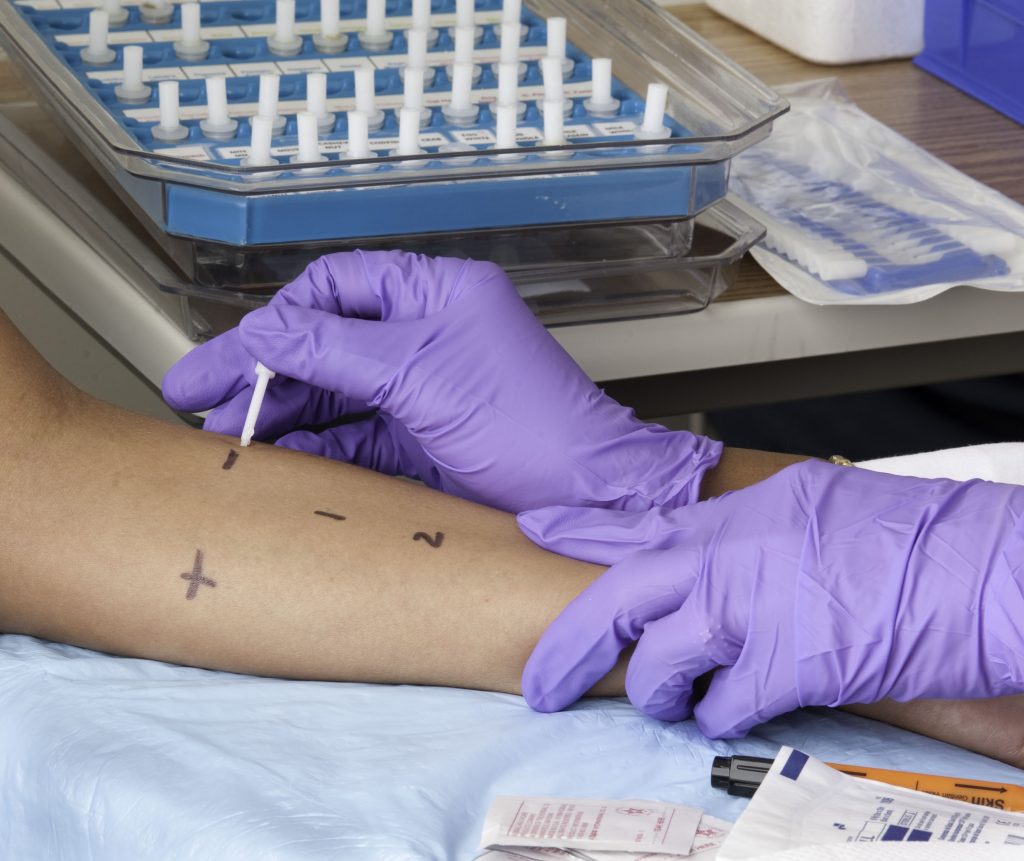Allergy Assessments
Allergy assessment can be useful to:
- Determine the allergy profile of the patient with severe asthma
- Determine the presence and severity of co-morbidities (e.g. rhinitis, chronic rhinosinusitis (CRS), anaphylaxis, eczema or atopic dermatitis, food and drug related reactions). For more information on comorbidities, click here
Specific allergic triggers that may be assessed include:
- Inhalant and food (if appropriate) allergy
- Food chemical intolerance
- Drug reactions


